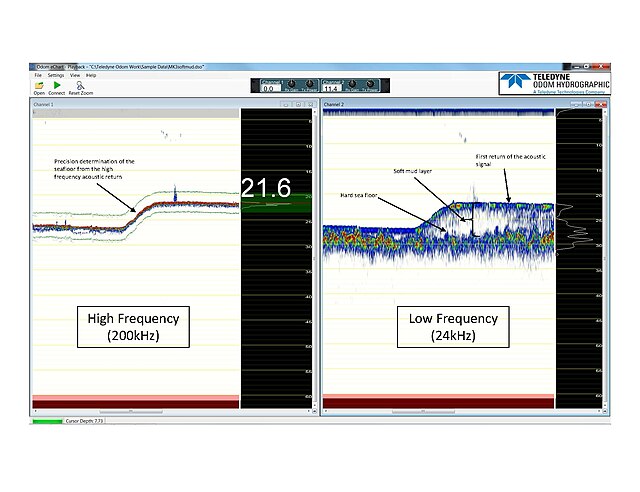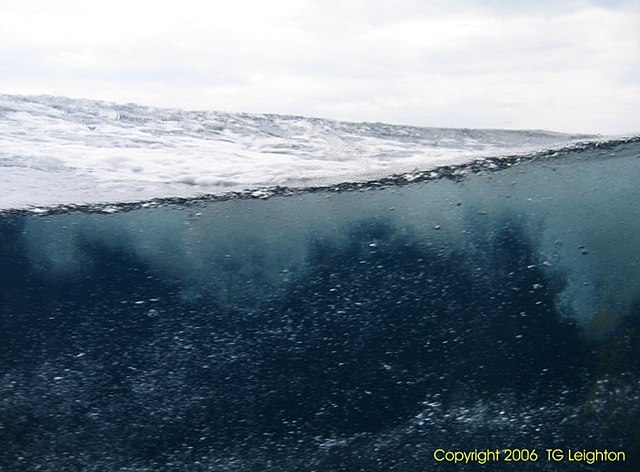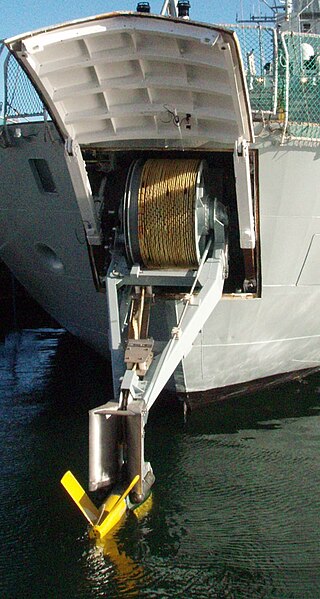Echo sounding or depth sounding is the use of sonar for ranging, normally to determine the depth of water (bathymetry). It involves transmitting acoustic waves into water and recording the time interval between emission and return of a pulse; the resulting time of flight, along with knowledge of the speed of sound in water, allows determining the distance between sonar and target. This information is then typically used for navigation purposes or in order to obtain depths for charting purposes.
Illustration of echo sounding using a multibeam echosounder.
beam shape of a single-beam echosounder on a USV
An example of a precision dual frequency echosounder, the Teledyne Odom MkIII
A screen grab of the difference between single and dual frequency echograms
Sonar is a technique that uses sound propagation to navigate, measure distances (ranging), communicate with or detect objects on or under the surface of the water, such as other vessels.
French F70 type frigates (here, La Motte-Picquet) are fitted with VDS (variable depth sonar) type DUBV43 or DUBV43C towed sonars.
Sonar image of the Soviet Navy minesweeper T-297, formerly the Latvian Virsaitis, which was shipwrecked on 3 December 1941 in the Gulf of Finland
Bubble clouds shown under the sea. From ref.
Variable depth sonar and its winch








